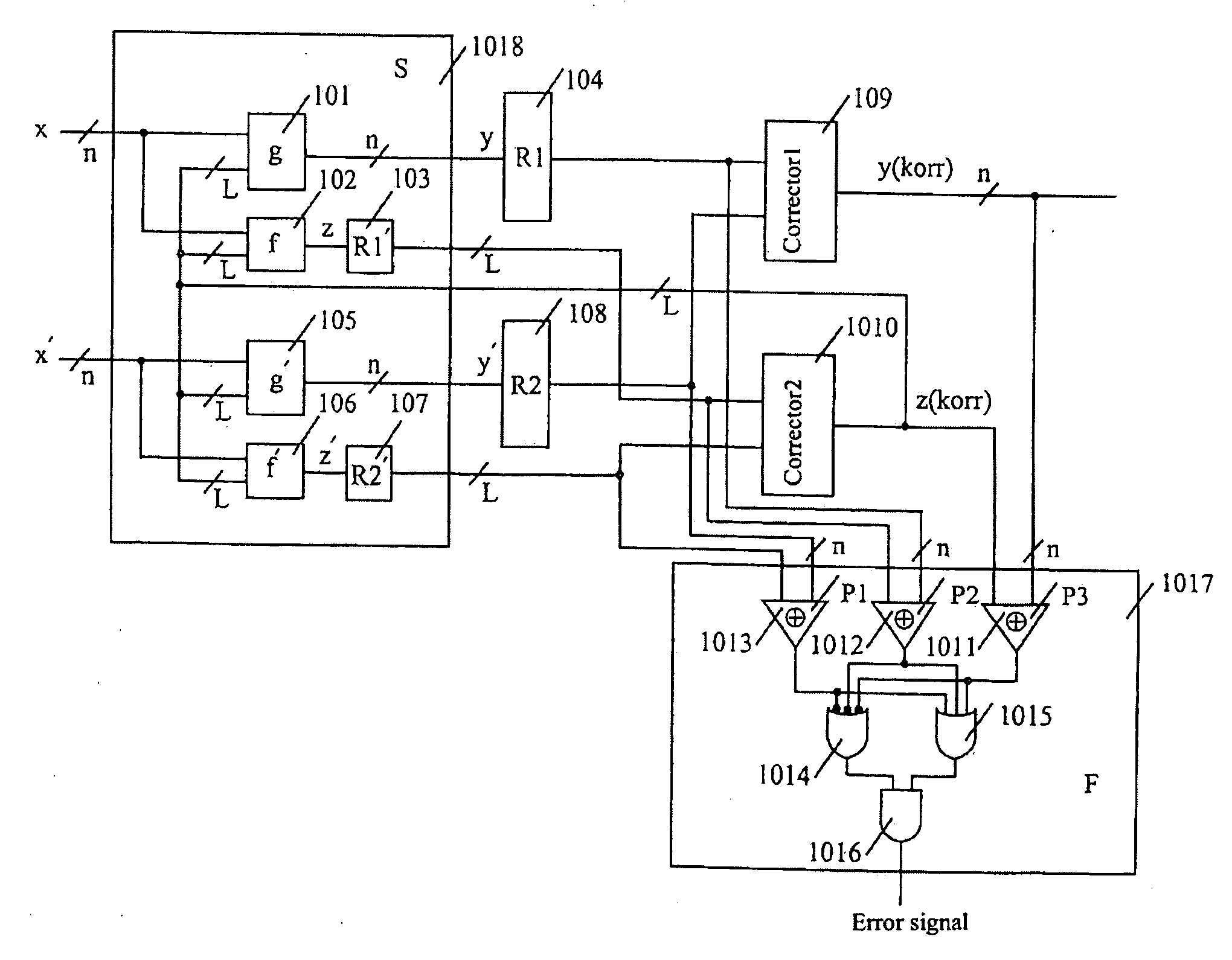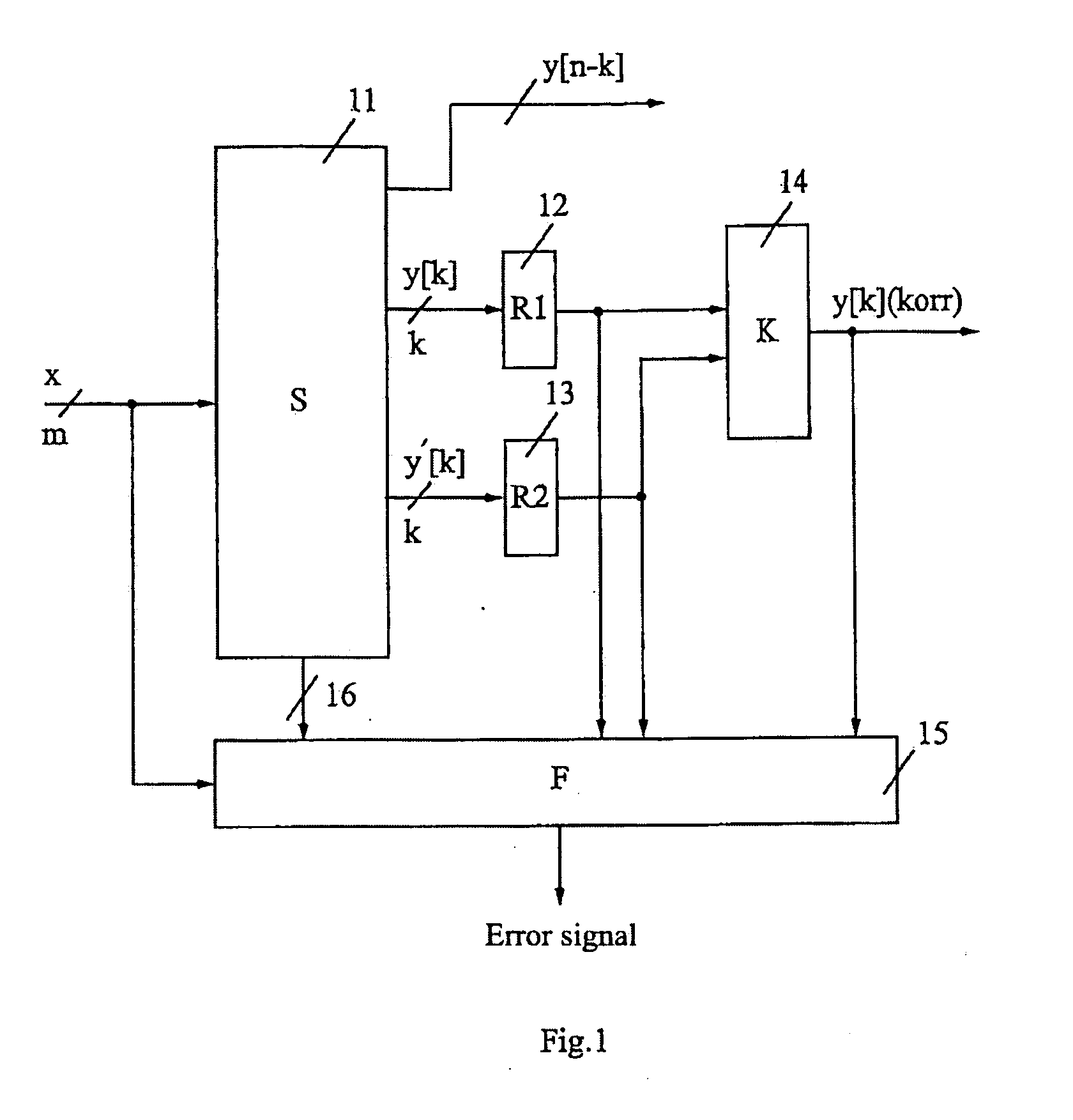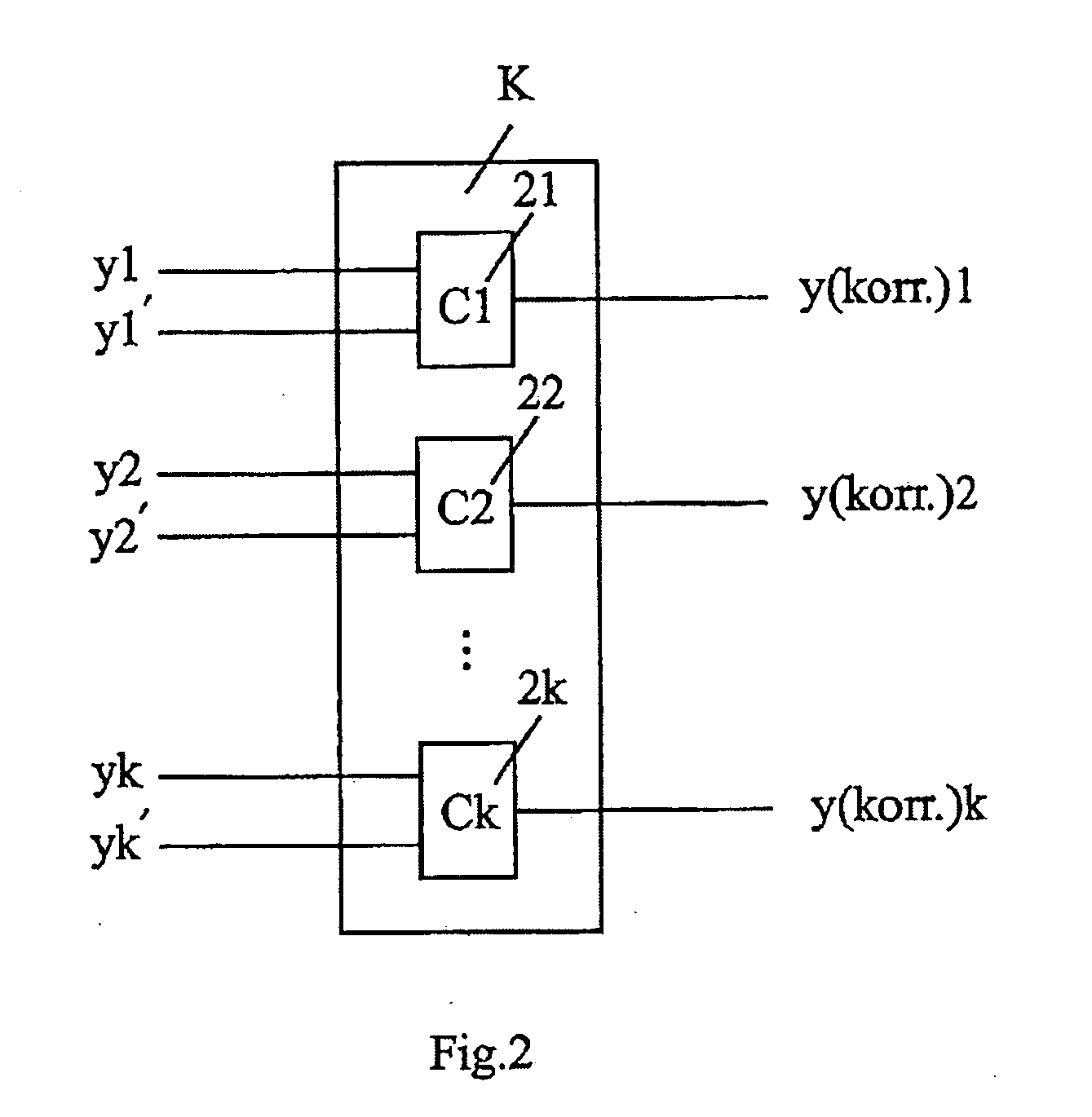Circuit arrangement
a technology of circuits and components, applied in the field of circuit arrangements, can solve the problems of high hardware complexity, increasing error frequency, and relatively often inability to function circuits,
- Summary
- Abstract
- Description
- Claims
- Application Information
AI Technical Summary
Benefits of technology
Problems solved by technology
Method used
Image
Examples
Embodiment Construction
OF EMBODIMENTS OF THE INVENTION
[0053]The invention will be explained in more detail below on the basis of preferred examples of embodiments and with reference to figures, in which:
[0054]FIG. 1 shows a circuit arrangement for correction and error detection for a functional circuit;
[0055]FIG. 2 shows a corrector composed of C-elements with 2k inputs and k outputs;
[0056]FIG. 3 shows an implementation of a C-element composed of transistors in CMOS;
[0057]FIG. 4 shows the table of values for a C-element;
[0058]FIG. 5 shows a circuit arrangement for correction and error detection for a combinatorial circuit using a separable error-detecting code;
[0059]FIG. 6 shows an error detection circuit using a parity code;
[0060]FIG. 7 shows a circuit arrangement for a particular combinatorial circuit;
[0061]FIG. 8 shows a circuit arrangement for a particular combinatorial circuit, in which parts of the functional circuit and of the error detection circuit are used in common;
[0062]FIG. 9 shows a circuit ...
PUM
 Login to View More
Login to View More Abstract
Description
Claims
Application Information
 Login to View More
Login to View More - R&D
- Intellectual Property
- Life Sciences
- Materials
- Tech Scout
- Unparalleled Data Quality
- Higher Quality Content
- 60% Fewer Hallucinations
Browse by: Latest US Patents, China's latest patents, Technical Efficacy Thesaurus, Application Domain, Technology Topic, Popular Technical Reports.
© 2025 PatSnap. All rights reserved.Legal|Privacy policy|Modern Slavery Act Transparency Statement|Sitemap|About US| Contact US: help@patsnap.com



